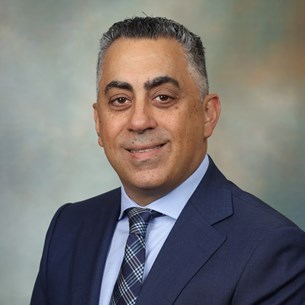Meeting
2023 ASCO Annual Meeting

Mayo Clinic, Scottsdale, AZ
Tanios S. Bekaii-Saab , Mark Yarchoan , Muneeb Ahmed , David Michael Cohan , Wen Wee Ma
Background: Despite advances in treatment for unresectable hepatocellular carcinoma (HCC), long-term survival rates remain poor. The combination of bevacizumab (Bev) and atezolizumab (Atezo) is the preferred frontline therapy for advanced HCC, but a minority of patients (pts) respond, and secondary resistance usually occurs within months. HCC has an immune-suppressed tumor microenvironment, mediated by activated immune checkpoint signaling and angiogenesis pathways, which may contribute to therapeutic resistance. RP3 is a genetically modified herpes simplex virus type 1 (HSV-1) that expresses the fusogenic gibbon ape leukemia virus glycoprotein with the R sequence deleted (GALV-GP-R–), an anti–CTLA-4 antibody-like molecule, CD40 ligand, and 4-1BB ligand. The direct oncolytic effect coupled with immune stimulation by RP3 in the tumor microenvironment is intended to provide systemic antitumor activity and enhance therapeutic response to anti–PD-1/PD-L1 agents, such as Atezo. Preclinical data have demonstrated improved distribution of oncolytic HSV within tumors in combination with Bev, supporting the clinical combination of RP3 with Bev. This study will evaluate the safety and efficacy of RP3 combined with Atezo and Bev as first- (1L) and second-line (2L) systemic therapies for unresectable and advanced HCC. Methods: The 1L and 2L cohorts will each enroll up to 30 pts. Pts in the 1L cohort may not have received prior systemic treatment; pts in the 2L cohort must have progressed on or following one prior line of systemic therapy, which must have included a PD-1/PD-L1−directed agent. Key inclusion criteria include advanced, unresectable HCC with ≥1 measurable tumor of ≥1 cm in longest diameter, Child-Pugh Class A, and Eastern Cooperative Oncology Group performance status of 0−1. Key exclusion criteria include untreated esophageal and/or gastric varices with bleeding or at high risk for bleeding and macroscopic invasion of tumor into any major blood vessel(s) and/or main bile ducts. Pts with a history of medically refractory hepatic encephalopathy and/or hepato-renal syndrome are also excluded. Pts in the 1L cohort will receive 1200 mg Atezo and 15 mg/kg Bev every 3 weeks (Q3W) together with RP3 intratumorally Q3W for a total of up to 8 doses. Pts in the 2L cohort will receive RP3 every 2 weeks for 4 doses with Bev Q3W starting on cycle (C) 1 day (D) 1, then RP3 and Bev Q3W for up to 4 more doses with Atezo Q3W being added on C4D1. The primary endpoint is overall response rate (ORR) by Response Evaluation Criteria in Solid Tumors (RECIST) v1.1. Secondary endpoints are safety, ORR using HCC modified RECIST, duration of response, complete response rate, and progression-free survival. Clinical trial information: NCT05733598.
Disclaimer
This material on this page is ©2024 American Society of Clinical Oncology, all rights reserved. Licensing available upon request. For more information, please contact licensing@asco.org
2023 ASCO Annual Meeting
Poster Session
Gastrointestinal Cancer—Gastroesophageal, Pancreatic, and Hepatobiliary
Gastrointestinal Cancer—Gastroesophageal, Pancreatic, and Hepatobiliary
Hepatobiliary Cancer - Advanced/Metastatic Disease
NCT05733598
J Clin Oncol 41, 2023 (suppl 16; abstr TPS4178)
10.1200/JCO.2023.41.16_suppl.TPS4178
TPS4178
495b
Abstract Disclosures
2023 ASCO Gastrointestinal Cancers Symposium
First Author: Tanios S. Bekaii-Saab
2024 ASCO Gastrointestinal Cancers Symposium
First Author: Kevin Kim
2024 ASCO Gastrointestinal Cancers Symposium
First Author: Daneng Li
2023 ASCO Annual Meeting
First Author: Richard S. Finn